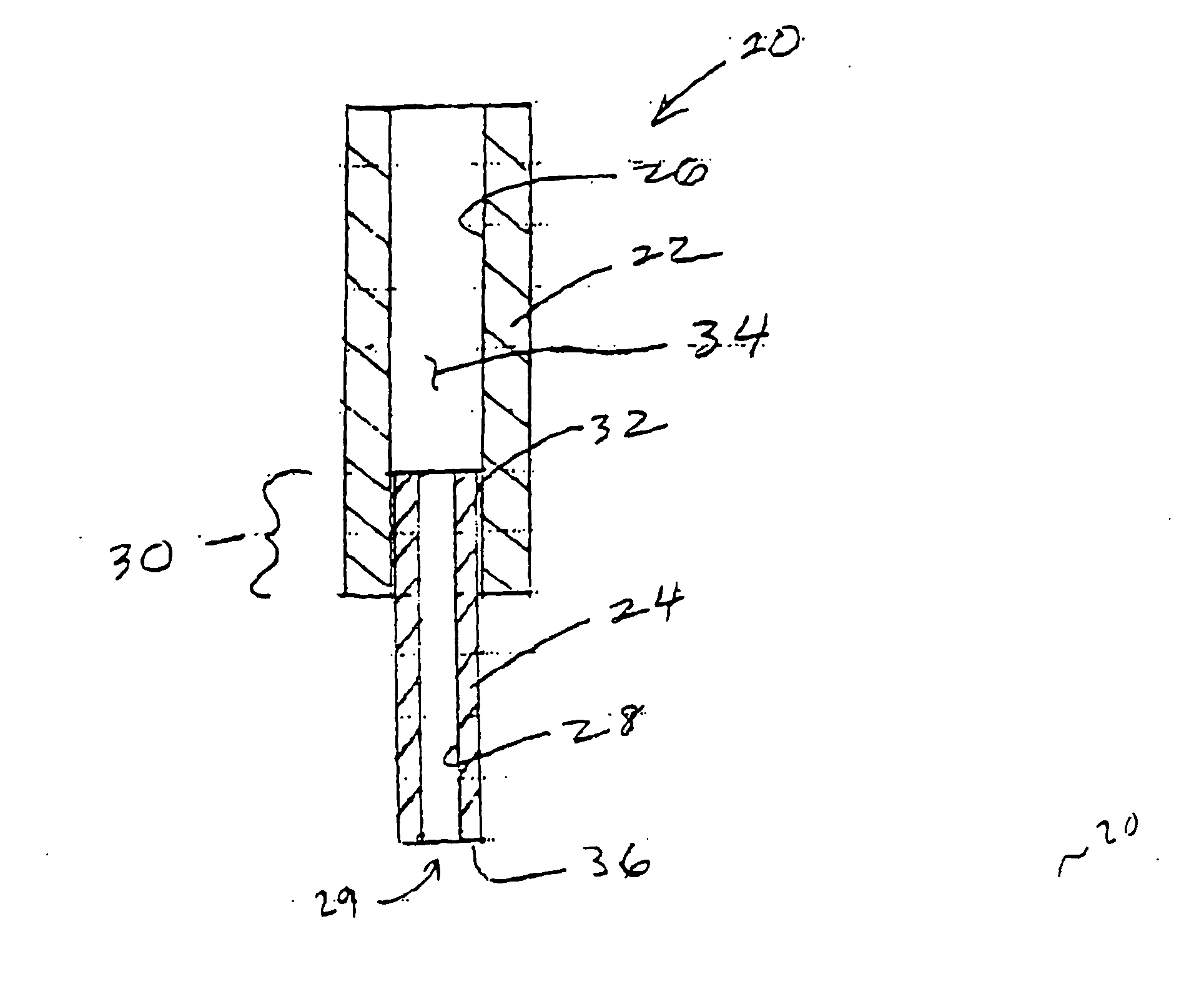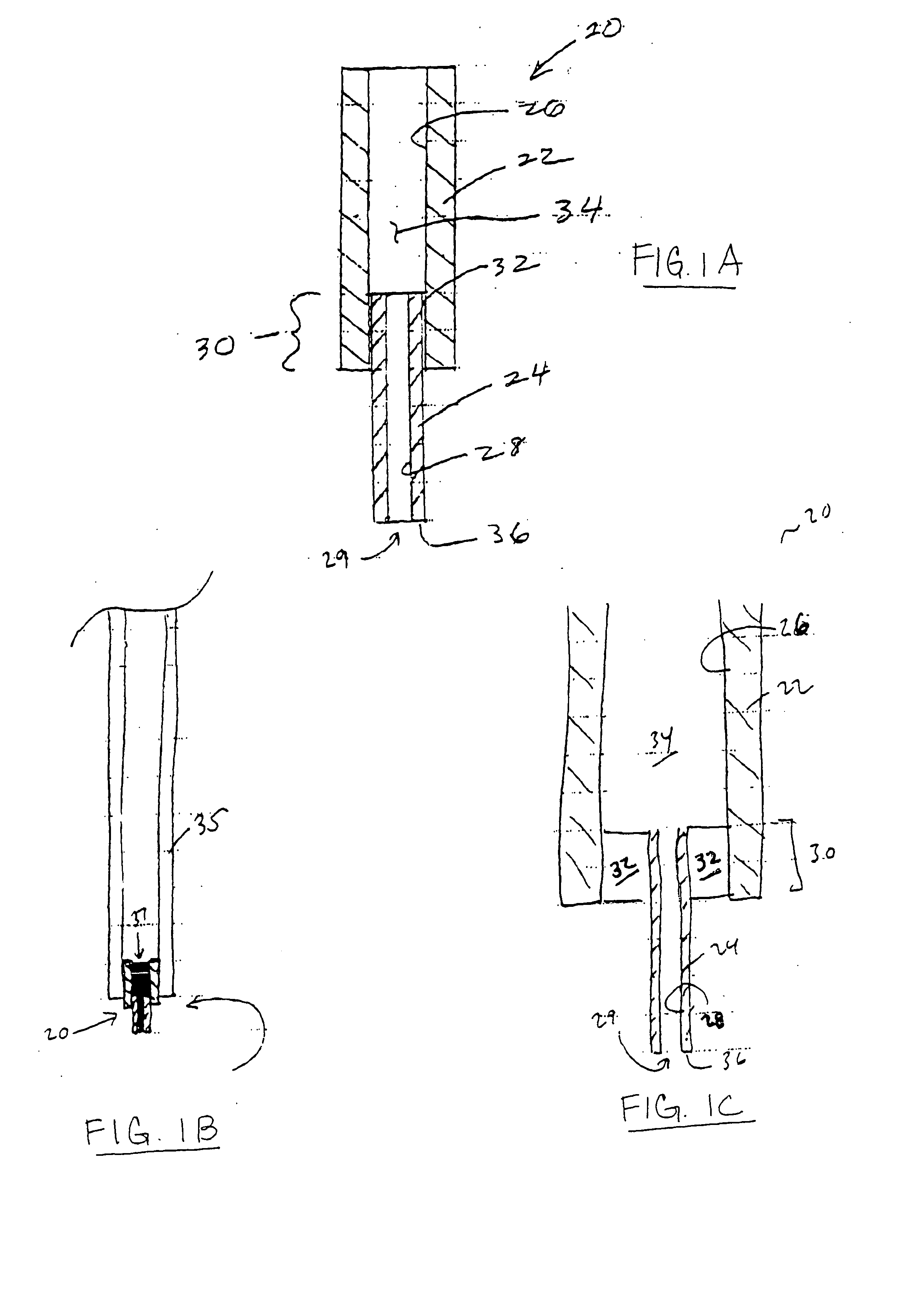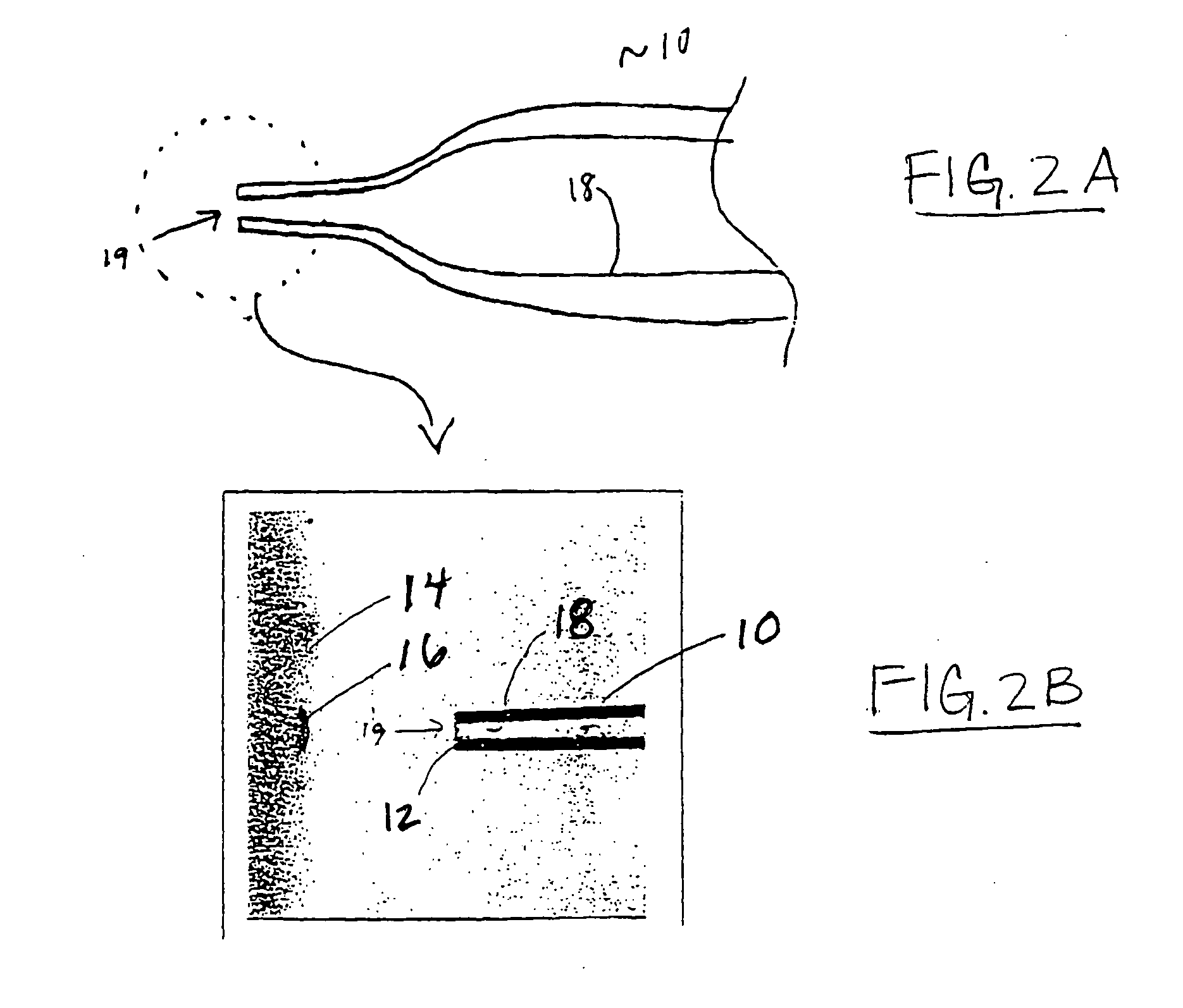Capillary tube printing tips for microarray printing
a printing tip and microarray technology, applied in the field of capillary tube printing tips for microarray printing, can solve the problems of difficult cleaning of quill pins, large amount of data, and insufficient control of chip manufacturing process, so as to achieve easy modification, simple printing tip, and minimal drop-to-drop variation
- Summary
- Abstract
- Description
- Claims
- Application Information
AI Technical Summary
Benefits of technology
Problems solved by technology
Method used
Image
Examples
first embodiment
[0028] In FIGS. 2(a) and 2(b), a microarray printing tip in accordance with the present invention is illustrated. The tip is constructed as a capillary tube 10 having an inner bore 18. The inner bore 18 has an opening 19 at the distal (contact) end of the tube 10. An annular contact surface 12 surrounds the opening 19. The inner bore 18 has an inner diameter and an axial length that define a liquid reservoir volume which, in cooperation with capillary and surface forces applied at the interface between the liquid material and the inner surface of the inner bore, allows the tube 10 to receive and retain an appropriate amount of the liquid material.
[0029] As seen in FIG. 2(a), the diameter of the tube 10 and inner bore 18 increases from the distal (contact or printing) end (FIG. 2(b)) to the proximal (reservoir) end to provide a desired gradient in surface forces applied to the liquid material. As will be understood by those skilled in the art, the capillary forces holding the liquid ...
second embodiment
[0031]FIG. 1(a) shows a microarray printing tip 20 constructed from concentric first and second capillary tubes 24 and 22. The second capillary tube 22 (reservoir tube) has an inner bore 26 defining a liquid reservoir 34. The inner diameter of the inner bore 26 is larger than the outer diameter of the first capillary tube 24 so that the second capillary tube 22 partially overlaps (at region 30) the proximal end of the first capillary tube 24.
[0032] The first capillary tube 24 (printing tube) has an inner bore 28 in fluid communication with the inner bore 26 of the second capillary tube 22. The inner bore 28 has a bore opening 29 at the distal end of first tube 24. An annular contact surface 36, preferably flat, is formed at the distal end of the first capillary tube 24. The contact surface 36 surrounds the opening 29 from the inner bore 28 of the first capillary tube 24.
[0033] The axial length and inner diameter of the inner bore 26 of the second capillary tube 22, in cooperation w...
third embodiment
[0038]FIG. 3 shows a capillary tube printing tip in accordance with the present invention, constructed from a single glass capillary tube 40 having an inner bore 42 of uniform geometry. The distal (contact) end of tube 40 has a contact surface 52 surrounding the bore opening 50. The inner bore 42 is sized and shaped to receive and retain by capillary force an effective deposition volume of the liquid material. Similarly, the contact surface 52 and bore opening 50 are adapted for depositing a drop of the liquid material when the contact surface 52 is moved proximate the printing substrate. A key design feature of using two capillary tubes as shown in the embodiment of FIGS. 1(a)-1(c) is the ability to modulate the relative strength of surface forces between the printing and reservoir capillary tubes. This functionality can also be attained by using a hydrophilic surface treatment to provide a gradient in surface forces along regions of a single capillary tube. Thus, applying a surfac...
PUM
 Login to View More
Login to View More Abstract
Description
Claims
Application Information
 Login to View More
Login to View More - R&D
- Intellectual Property
- Life Sciences
- Materials
- Tech Scout
- Unparalleled Data Quality
- Higher Quality Content
- 60% Fewer Hallucinations
Browse by: Latest US Patents, China's latest patents, Technical Efficacy Thesaurus, Application Domain, Technology Topic, Popular Technical Reports.
© 2025 PatSnap. All rights reserved.Legal|Privacy policy|Modern Slavery Act Transparency Statement|Sitemap|About US| Contact US: help@patsnap.com



